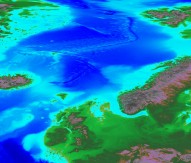
Study to pioneer use of data scanner on UAV
A new international project led by the University of Exeter and funded by the European Research Council will investigate the Amazon’s sustainable future by studying the way that ancient societies used and transformed the environment. The study is pioneering a remote sensing data device that will be attached to an Unmanned Aerial Vehicle (UAV) to scan beneath the canopy of the forest.
The academics will undertake a comparative study of pre-Columbian land uses in four different regions of Amazonia that represents different types of land-use during the last 3,000 years of the pre-Columbian period. Evidence of ancient societies in these areas includes sites in the Lower Amazon that feature the human-made Amazonian Dark Earths – where the land is more fertile than the surrounding area due to the composting of food leftovers and human waste through the influence of the community staying in one area. Researchers will also will focus on the scale and nature of how complex human societies transformed the environment, from the minimal impact of hunters to the influences of more complex societies.
It is known that humans have lived in Amazonia for at least the last 13,000 years, and until recently it had been assumed that people lived in harmony and made little or no impact on the ancient forests. However, recent archaeological studies suggest the presence of sizable, regionally organised, pre-Columbian societies began to transform the landscape during the Late Holocene (1 A.D – present) at a scale not previously recorded.
Explaining the research, project leader Professor José Iriarte of Exeter University said: “The data gathered through the project has the potential to estimate, for the first time, the spatial scale of past human disturbance across the entire Amazon basin. Our project will resolve the previously overlooked role of humans as important agents of environmental change; from being viewed as the ‘noble savage’ living in harmony with ancient forests creating little or no impact on the landscape to actively shaping Amazonia through agricultural practices.
“In order to make informed decisions about a sustainable future, it is critical that policy makers have a sound understanding of the historical role of humans in shaping the Amazonian landscapes and to what extent forests were resilient to historical disturbances.”
The multidisciplinary project will use remote sensing, including the Light Detection and Ranging (LIDAR) remote sensory technology used for high-resolution maps. This methodological breakthrough is the first time that the state-of-the-art LIDAR technology will be used on a UAV to explore the forest’s archaeological features below the canopy of trees in the middle of the Amazon. The premier flight is due to take place in autumn 2015.




